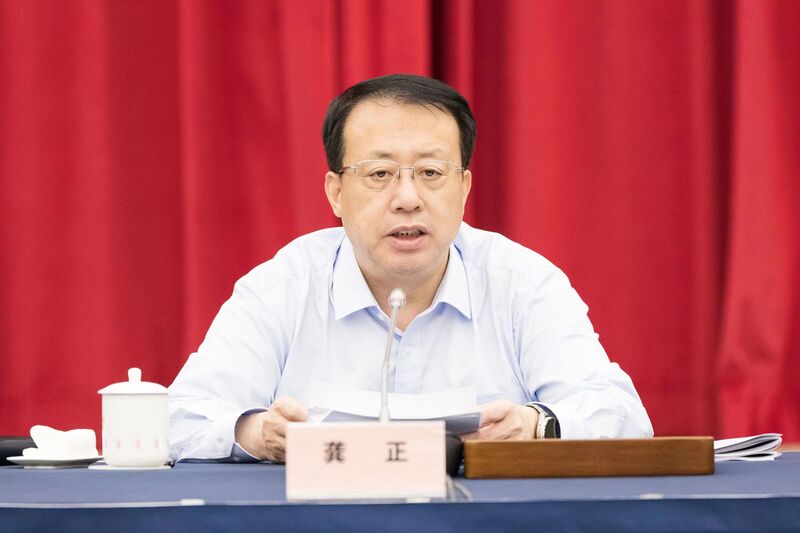More than 800000 Shanghai residents have taken off their illiteracy hats like this. Looking back at Shanghai research, from not knowing big characters to being able to communicate with Chairman Mao in a factory | Shanghai | Chairman Mao
In the early days of liberation, Shanghai experienced an inconspicuous safety accident:
At the state-owned Asia steelmaking workshop, worker Zhang Gaotie discovered during his night shift that the bainite furnace used for steelmaking urgently needed a cold pump machine. After pressing the switch, he accidentally caused all the upper and lower fuses to burst.
After investigating the reasons, it was discovered that Zhang High speed Railway was not literate. When he arrived at the steelmaking workshop, he "dared not touch anything". When he encountered an unexpected situation, he was at a loss. He only saw a note on the switch and was not sure what was written on it. He pressed the switch downwards, but unexpectedly, it caused an accident.
The predicament of Zhang High speed Railway was not uncommon among the vast worker population in Shanghai at that time. At that time, Shanghai and even the whole country faced a common problem: in the early days of the founding of the People's Republic of China, various industries were striving to restore economic production, requiring a large number of workers with a certain level of education to operate machines. However, at that time, the overall cultural level of Shanghai workers was relatively low. Looking across the country, over 400 million out of 550 million people are illiterate or semi literate, and the low cultural level seriously restricts economic construction and production development.
To change this situation, a literacy and literacy campaign was rapidly launched across the country.
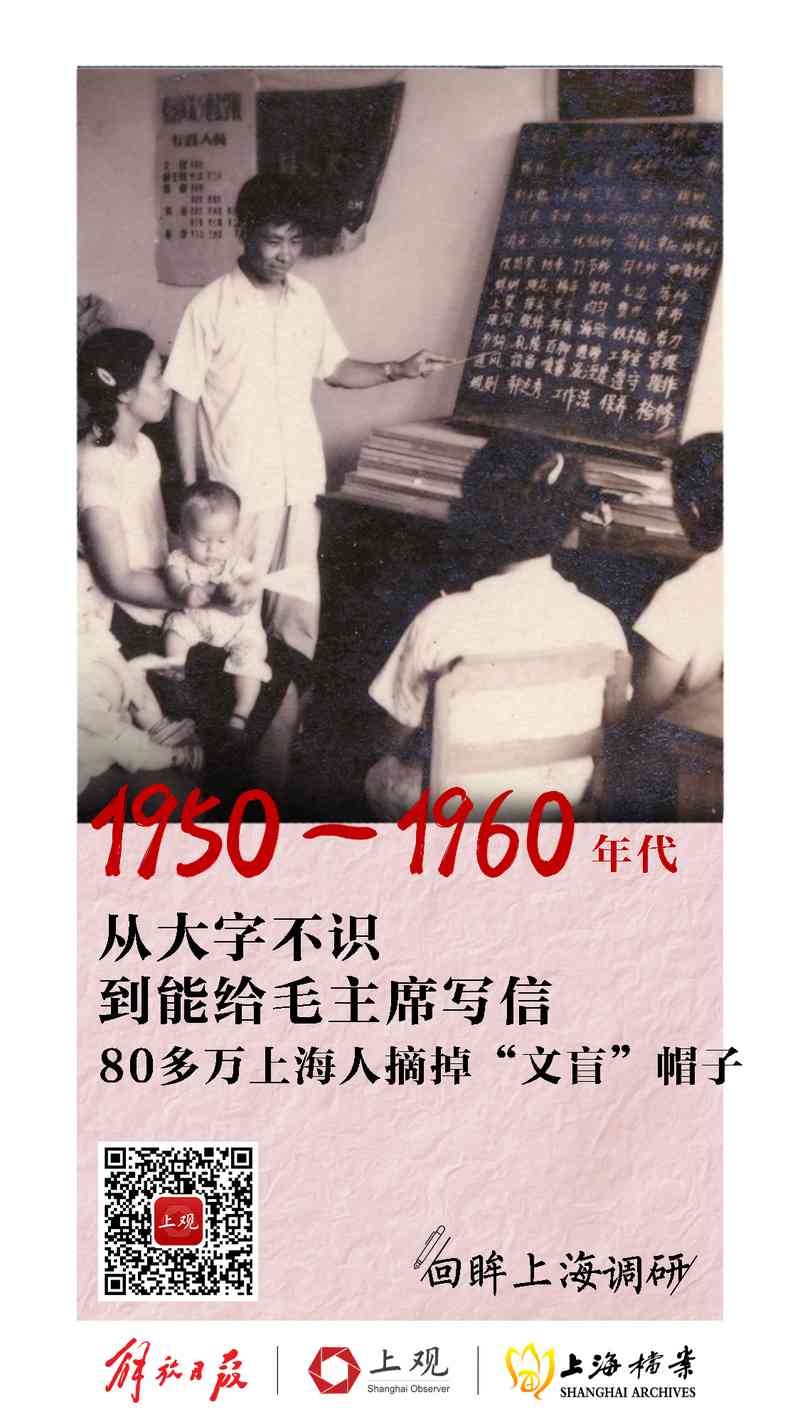
In 1952, workers from National Cotton Factory No. 6 were learning the Rapid Literacy Method
How can workers become leaders if they don't even recognize road signs?
There is a record in the archives of the Shanghai Municipal Archives that in September 1950, a survey was conducted in Shanghai and relevant departments found that 80% of the employees of Shanghai Third Cotton Mill were illiterate or semi illiterate. Among the 5825 employees of Shenxin Ninth Factory, 3691 were illiterate or semi illiterate, accounting for 63.4%. Meihui Hardware Factory has 49 employees, of which 45 are illiterate and semi literate. At that time, illiterate and semi literate workers accounted for about 75% of the city's workforce, with a total of 700000 people. Among them, industries such as handicrafts, textiles, casting, and dock loading and unloading were the most concentrated.
The illiteracy and semi illiteracy rates among workers remain high, and there is a shortage of qualified workers. Some workers cannot even complete basic machine operations, let alone improve production technology and work efficiency in industrial production. This not only hinders the popularization of production technology among the working class, affects normal production activities and economic development, but also to some extent restricts the working class from playing a more important role on the political stage of New China.
Workers help each other learn during their lunch break
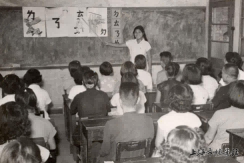
"Some textile workers and dock workers are illiterate. Then there's a problem: liberated, the working class is the leadership class, and workers don't even know road signs when they walk on the road. How can they lead?" Li Jiaqi, who served as the Vice Chairman of the Shanghai Federation of Trade Unions in the 1950s, recalled, "When workers had this strong demand, our Federation of Trade Unions felt that this matter needed to be taken seriously, and we launched a literacy campaign."
In April 1950, the Shanghai Trade Union Cultural and Educational Cadres Conference was held, during which a report was made on carrying out the literacy movement, mobilizing the working class in the city to actively carry out the literacy and cultural movement, opening the prelude to the city's literacy campaign, and proposing the goal of "promoting literacy education and gradually reducing illiteracy".
At that time, the central government stipulated that the literacy movement was under the control of the government, the government formulated the education system, and trade unions were responsible for specific work. Trade unions actively organize education in industrial and mining enterprises, establish educational institutions, recruit personnel, train teachers, arrange venues, and write textbooks to stimulate the learning enthusiasm of workers.
In the literacy class, the teacher is in class
The specific policy for eradicating illiteracy is to prioritize workers over the general public, industrial workers over general workers and working people, state-owned factories over private factories, large factories over small ones, and factories with conditions before difficult ones. Ultimately, it is hoped that after about 250 hours of learning, the workers and masses can recognize around 2000 words and read popular reading materials.
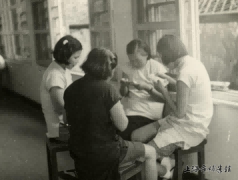
At that time, factories with conditions could establish night schools, while small factories could unite to establish joint night schools. Literacy work also developed from factories to various places such as vegetable markets and alleys, gradually developing into nationwide literacy. After 1950, there were 49 municipal night schools for workers in Shanghai, with more than 17000 students, over 80% of whom were young industrial workers between the ages of 18 and 30. Seven municipal vocational schools also accept employees, and 106 schools sponsored by various trade unions have a total of 15900 students.
Workers from Guomian 17th Factory study culture in the cafeteria after work
During the peak of literacy learning in those years, a typical example emerged, such as Shi Xiaomei, an old worker from Shanghai National Cotton Factory. Shi Xiaomei, who is already in her 60s, overcame her eye disease and worked hard to learn culture. After reaching a semi illiterate level, she began writing and writing letters, and even wrote a letter to Chairman Mao with the simple emotions of an old worker. She wrote in the letter:
"This year's National Day, I reported my academic performance to you and soon received your reply. You instructed me to continue working hard, studying hard, and always be a model for the masses. So, I wake up early every morning to write, and every day when I work, I think about how to be a model for the masses. I share my experience of participating in crash literacy classes with elderly and young workers, encouraging them to work hard."
Later, Shi Xiaomei received a reply from Chairman Mao's office, encouraging her to actively learn culture and make more contributions to building a new China. This letter had a significant impact in Shanghai and even throughout the country, effectively promoting the literacy movement at that time.
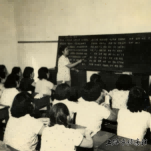
Timely research and rectification to avoid rashly advancing
In order to accelerate the process of literacy, in 1952, Shanghai responded to the central call and promoted the "Qi Jianhua Rapid Literacy Method" teaching experiment in key areas throughout the city.
However, due to the neglect of the objective laws of long-term education, exaggeration of the subjective learning desires and abilities of illiterate and semi illiterate workers, and one-sided pursuit of literacy speed, the implementation of literacy plans has deviated from the objective reality of learning for illiterate and semi illiterate workers.
The Provisional Implementation Plan for Amateur Education for Employees in Shanghai in 1950 envisioned that "within 3 to 5 years, the existing illiterate among employees should be able to read around 1000 words, read popular books and newspapers, and write simple letters and reports.". As a result, by 1953, there were still 662500 illiterate and semi illiterate employees, accounting for 47% of the total number of employees, and the goal of achieving literacy for all workers had not been achieved.
Workers learn culture in the cafeteria after work
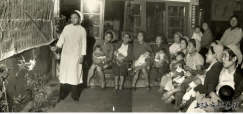
At that time, the supervisory department found through research that due to insufficient understanding of the long-term and complex nature of literacy education itself by the cultural and educational leadership organs of various factories, they rashly advanced, resulting in blind development of literacy education. In the implementation of the rapid literacy method, there have been serious problems in consolidating and revitalizing.
So, Shanghai adjusted its strategy in a timely manner, implemented the central government's policy of "rectification, consolidation, and steady development", and began to carry out rectification work on factories that implemented the accelerated literacy method experiment. In February 1953, the Shanghai Employee Amateur Education Committee first dispatched a working group to carry out a key rectification of the National Cotton 19th Factory, which had 1008 people participating in the study of accelerated literacy. Subsequently, Shanghai began a comprehensive rectification of factories implementing the accelerated literacy method experiment, transforming the literacy method from accelerated literacy to universal learning. A total of 67608 people graduated that year.
Citizens attending literacy lectures
There are still many cases of constantly adjusting work methods during research like this. For example, in 1956, in order to develop a comprehensive literacy plan for the suburbs based on facts, the Propaganda Department of the Shanghai Suburban Work Committee conducted a series of investigations and studies. It also held a series of symposiums for different groups such as old farmers, women, and young teachers, conducted individual interviews, and worked with township authorities to study.
Research has found that at that time, there were problems with insufficient teaching resources and generally poor quality of teachers in rural areas. It was also difficult to implement the requirement of 240 hours of study time per year proposed by the Education Bureau. The research has gained an understanding of these issues that have arisen in the literacy campaign and provided corresponding suggestions. For example, this survey conducted a detailed forensic analysis on the age definition of literacy targets.
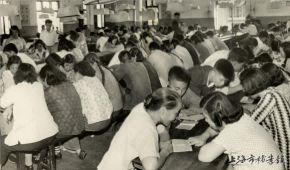
At that time, many parts of the country generally defined the age range of literacy targets as under 50 years old. With the continuous progress of work, this standard sparked some different opinions. Many people suggested that the age limit should be 40 years old, because the older the age, the lower the learning ability, willingness to learn, learning time, and physical conditions, and the effectiveness of literacy education was not ideal.
So, this survey also combined the actual situation of the two production teams, Jindong Society in Jinqiao Township and Aizhen Society in Aizhen Township, and demonstrated from the dimensions of enrollment rate, consolidation rate, learning effectiveness, physical conditions of farmers, and comprehensive cultural situation of the production team.
Research has found that both in terms of enrollment rate and consolidation rate, the proportion of students aged 40 and above is not high, and the learning effect is not ideal. Zhu Xianmei, a 46 year old farmer from Team 10 of Aizhen Society, has attended winter school three times but is still studying the first textbook and has forgotten all the words she has learned. Another farmer, Zhu Lanxin, studied for two months in the first half of the year and never missed classes. She read the first volume of 11 lessons, which had 143 new characters, but she could only recognize the word "he" in the cooperative. From a large number of similar cases, it can be inferred that people over 40 years old "even if they persist, the effect is not significant.".
Inside page of the 1955 Shanghai Suburban Farmers Literacy Textbook
The physical condition of the trainees is also an important reference factor. There is a saying circulating among the interviewees: "At the age of 40, people are about to change their perspective and lose their minds." "After a day of living, they want to rest early at night, and their bodies can't bear it anymore." Among illiterate people over 40, not only are their eyesight declining, but many also feel soreness all over their bodies on cloudy days.
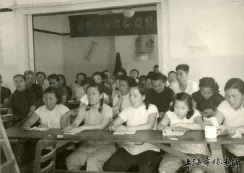
Therefore, the research group suggests that it is practical to target the group under 40 years old for literacy, but those over 40 years old or even older should adopt a welcoming attitude as long as there are requirements.
More than 800000 Shanghai residents have removed their illiteracy hats
With the continuous promotion of the literacy movement, a large number of workers and masses not only have a significant increase in literacy, but have also broken away from the ranks of illiterate and semi literate. They have also broken through feudal superstition, gradually mastered scientific knowledge, and established materialist views.
For example, in the text "Thunder", it is written as follows: "If you talk to the old men in the countryside and ask them why thunder struck, they must say that there is a thunder god in the sky, holding a big banner and other myths. We should not believe them, but there are still many people who do not understand what thunder is. Thunder is the function of electricity... In the past, people did not know that this was because they were electrocuted by lightning, so they said that this person did something bad and was killed by lightning. In fact, this is completely wrong." The text refutes superstitious views by introducing the principle of lightning production.
Shanghai rural female teachers are teaching cultural courses to farmers
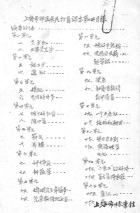
Due to the popularization of scientific and cultural knowledge in worker literacy education, feudal superstitions that once existed in some illiterate and semi illiterate groups, such as reincarnation and not going to hospitals when sick, have gradually been eliminated.
In addition, in the literacy movement, the class consciousness and political participation enthusiasm of the working class have also been greatly enhanced. Yan Haoyuan, a worker at the Tianyuan Chemical Plant, was a National People's Congress representative. When he went to Beijing to attend the conference in 1951, he was worried every day because he couldn't read a word. Later on, through learning, I was able to read and write. By the time I went to Beijing to attend the conference in 1953, I was able to roughly understand the documents issued by the conference, and during group discussions, I could also refer to the speech outline I wrote for my speech. In the literacy campaign, a large number of workers became literate and became talented. Among them, many national famous model worker, March 8th Red Flag bearers and other advanced figures emerged.
From 1950 to 1966, over 800000 Shanghai workers participated in this grand anti illiteracy movement, shedding the label of "illiterate" and changing their own destiny, as well as promoting the modernization process of the entire country.
In 1956, students from the literacy class in Pudong, Shanghai received their certificates at the graduation ceremony




